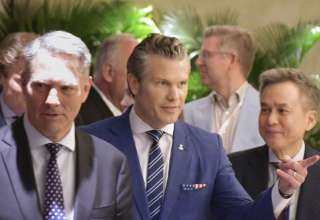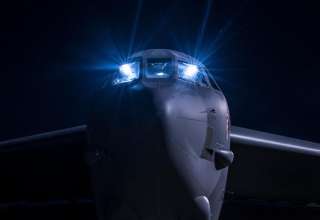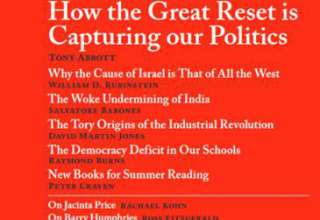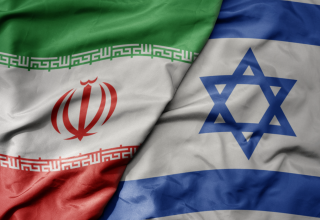by Richard Stone
Recent coverage about the diplomatic significance of President Biden not attending the ASEAN summit has tended to concentrate upon information of questionable relevance while ignoring the significance of related matters. The growing significance of ASEAN as a regional trade body in the most dynamic sector of the global economy and the strategic nature of some member countries, together with the changed position of the US in regional foreign affairs has not been raised or openly discussed as relevant criteria for assessing diplomatic decisions taken by the White House.
In late August an official White House statement that President Biden would not be attending the five-day ASEAN summit hosted by Indonesia in early September met with extensive media coverage critical of the diplomatic decision. (1) Replying to the controversy, an official media release from the White House, noted, ‘pointing to the US administration record of engagement in the Indo-Pacific, through many within ASEAN see groupings such as the Quad and AUKUS as Washington’s way of skirting the bloc’s often-under-whealming talk fests’. (2) The high-level diplomatic position was couched in informal English and grammar, revealing a great deal about the haste and disposition of high-ranking decision-makers and their panic-station mentality.
Despite the US diplomatic position, many people have started to question their role in the region; a recent survey taken across Indonesia, for example, found a majority believed ASEAN should opt toward China rather than the US. (3) It was also noted that China ‘had been more effective in presenting itself as a steady partner … with … ASEAN’. (4)
What was not openly discussed, however, remains a far more important position that the US has found itself in; it has had to deal with a rising China which has presented a credible challenge to its traditional regional hegemonic position. Regional US foreign policy has also continued to resort to military options through various alliances including the Indo-Pacific Strategy (IPS), the Quad and AUKUS. In fact, a recent statement about the Biden administration position noted, ‘the US administration is laser-focused on forging alliances and partnerships that can help it contain China, and going to an ASEAN meeting does not push that forward’. (5)
China, to the contrary, has remained more interested in extending trade links into regional diplomatic organisations, with considerable success.
ASEAN, furthermore, has also evolved from being a US-led trade body into a more independent-minded organisation. Its members do not want to plan for regional war with a major trading partner, and see no benefit from continually siding with a war-mongering US and an endless series of war-games and military exercises.
The problems emerging have been a long time coming.
Over two decades ago studies of the rising power of China noted, ‘the Pentagon is looking at Asia as the most likely arena for future military conflict, or at least competition’. (6) It was also noted that from the early 1990s, coinciding with the rise of many Asian economies linked to China, by a Pentagon official, ‘about two-thirds of the forward looking games staged by the Pentagon … have taken place partly or wholly in Asia’. (7)
The moves have also coincided with the US re-opening military facilities across the Indo-Pacific along the lines of joint facilities, hosted by other countries for use with extensive troop rotations, including those in northern Australia. (8)
The adoption by the US of their IPS has seen their alliance with Japan elevated to that of a global alliance with other countries across the region being allocated lower-level partners, and the Quad, ‘hemming China in from all sides’. (9)
The IPS has also included expansion of the elite US Defence Intelligence Agency (DIA), with an estimated 1,600 intelligence-collectors in various locations to provide assessments about the prevailing military balance of forces; trained by the CIA they are attached to the US Joint Special Operations Command and the Department of Defence. (10)
The US, however, have been continually troubled by the complexity of political cultures across the Indo-Pacific region. Regional diplomacy between Indo-Pacific countries is often very difficult and marked by historical rivalries most notably the role of Imperial Japan during the Second World War. Political stability of other countries has, therefore, become a major problem for the US as they seek to extend military and diplomatic influence across the Indo-Pacific. US-led regional diplomacy frequently has taken the form of a juggling act where the US have to respond to crisis, often beyond their immediate control.
Singapore, for example, is a major player inside ASEAN, as a founding member country in 1967, and the US IPS. The fact is it also a member of the British Commonwealth has provided the US with an added bonus.
While historically regarded as politically very stable, in recent times opposition to the long-time ruling People’s Action Party (PAP), has become increasingly vocal. Corruption scandals together with the recent presidential elections have raised concerns about the continued viability of the Singapore political system: it was noted, for example, ‘the campaign – marked by anodyne debates and facile accusations – has once again raised questions about the limitations of Singapore-style democracy and the governments tendency to amend the powers of office to suit its circumstances’. (11)
Other serious considerations for the US include the fact Singapore remains a highly strategic part of regional defence and security planning. Situated near the end of the first island chain running from the Kuril Islands to Borneo, evidence of its significance for the US has included a MOU in 1990 about US use of Singapore facilities, a Strategic Framework Agreement in 2005, an Enhanced Defence Co-operation Agreement in 2015, and a further MOU about co-operation in cyber-space in 2021, for use with, ‘intelligence-sharing and collaboration between trusted partners in capacity-building efforts’. (12)
Political upheaval in Singapore would be a major problem for US-led regional diplomatic initiatives and their intelligence-gathering.
The country is no stranger to the US and their allies spook-ridden intelligence-gathering, which has led, on occasions, to diplomatic problems with its neighbours. (13) Singapore, for example, is situated on the arc running from US intelligence facilities based at Pine Gap, with Guam, and on a straight line between Diego Garcia and Guam, revealing its highly strategic position for the US. (14)
Elsewhere, it has been acknowledged that President Marcos Jnr of the Philippines, does not ‘want to be fully aligned with the US against China, just like much of ASEAN wants to keep things on an even keel with China’. (15) The Philippines, like Singapore, has a significant geo-strategic position in the region as a central country with a long-standing complaint relationship with the US. Decision-makers in Manila, however, have no vested interest in conflict with China, as a major trading partner; a position mirrored across most of ASEAN.
In conclusion, we are witnessing the partial eclipse of US regional diplomatic influence, marked by a significant shift from trade considerations to military options. ASEAN, once a central body for US anti-communist interests half a century ago during the Vietnam War, has now emerged as a trade body which has largely incorporated China; the US, correspondingly, has allocated it of lesser importance for ‘US interests’. The trade challenge, by China, has been too great; a realistic assessment from the Australian business press, revealed a gloomy position for Canberra, whereby, ‘China has ASEAN where they want it: dependent on their trade and resigned to trying to make the best of a bad situation because economically China is the future’. (16)
The US, nevertheless, have an increased preoccupation upon defence and security considerations across the Indo-Pacific and appear to be preparing for war.
The move has also been accompanied by an announcement that the Australian Defence Force is considering a re-organisation for ‘sweeping changes to ensure the service was prepared for a potential Indo-Pacific conflict’, evidence, in itself, of the significance of the so-called ‘alliance’ for the US to rely upon Australia for military support. (17)
We need an independent foreign policy!
1. Biden’s ASEAN snub risks blowback when US can least afford it,
The Australian, 30 August 2023, and,
Biden dips out of ASEAN summit,
Editorial, The Australian, 31 August 2023.
2. Australian, ibid., 30 August 2023.
3. Ibid.
4. Ibid.
5. Ibid.
6. Asia moves to forefront of Pentagon planning,
The Guardian Weekly (U.K.), 1-7 June 2000.
7. Ibid.
8. See: US eyes return to south-east Asian bases,
The Guardian Weekly (U.K.), 29 June 2012, and,
US signs defence deal with Asia,
The Guardian Weekly (U.K.), 2 May 2014.
9. The reasons behind Washington’s push for GSOMIA.,
Hankyoreh, 12 November 2019.
10. Pentagon plays the spy game,
The Guardian Weekly (U.K.), 7 December 2012.
11. Singapore poll ‘a referendum on PAP rule’,
The Australian, 31 August 2023.
12. Wikipedia.
13. See: Oyster, The Story of the Australian Secret Intelligence Service,
Brian Toohey and William Pinwill, (Port Melbourne, 1989),
ASIS activities, p. 46, 53, 64-5, 67-9, 74-5, 78, 109, 112, 150, 199, 260, 268, and,
CIA activities, p. 68-9, 75-7, and, SIS activities, p. 22, 46, 65, 67, 74-6, 105.
14. See: Peters Projection, World Map, Actual Size.
15. ASEAN neutrality a ‘path to nowhere’,
The Australian, 4 September 2023.
16. Chinese map goads regional leaders ahead of summit week,
The Weekend Australian, 2/3 September 2023.
17. Too many chiefs ‘are blunting the ADF’,
The Australian, 1 September 2023.








